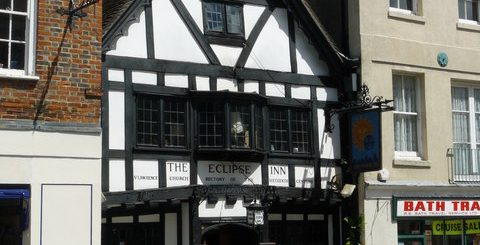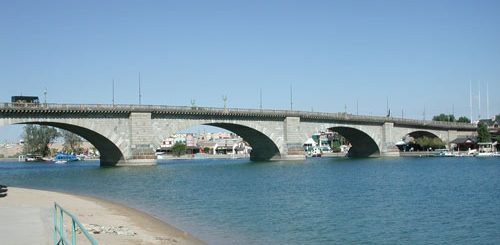St George’s Church, Gravesend
The original St George’s Church dates from 1497. The 1797 ‘Parishes: Gravesend’, The History and Topographical Survey of the County of Kent, tells us that ‘In the reign of King Henry VII the parishoners of Gravesend, who dwelt at a distance from the church, having for their convenience built an oratory or chapel, for celebrating mass and other divine offices, in 1497, obtained a licence for it from the archbishop’s official, and on April 2, 1510, John bishop of Rochester consecrated it, being dedicated to St. George, with a reservation, that it should not be prejudicial to the parish church, and that they should not bury or baptize, or perform any other sacred rite in it, excepting the consecration of the Lord’s body.’ In 1544 it replaced the St Mary’s as the Parish Church after St Mary’s became ruinous in 1529 following a fire.
 On 24 August 1727 a fire destroyed much of Gravesend including St Georges Church which was remodelled and restored in 1731 and further renovated again in 1892.
On 24 August 1727 a fire destroyed much of Gravesend including St Georges Church which was remodelled and restored in 1731 and further renovated again in 1892.
Probably the most famous burial at St George’s was that of John Rolfe’s Native American wife, Pocahontas, who was buried under the chancel on 21 March 1617 (prior to the fire of 1727). According to Anna Dubuis in an article entitled ‘The ghosts and legends of north Kent’ which appeared in the Gravesend Reporter on Wednesday 31 October 2012 ‘Princess Pocahontas’s spirit continues to linger in the grounds of St George’s Church in Gravesend.’
Pocahontas (aka Matoaka and later Rebecca Rolfe) (Born 1595 – Died March 1617) was the daughter of Powhatan a Native American Chief in Tidewater, Viginia. Captured by the English settlers in 1613, she converted to Christianity and in April 1614 married John Rolfe (Born 1585– Died 1622*). In 1616 she travelled with her husband to London and was introduced to English society, becoming a quick celebrity. She died at Gravesend in March 1617 on the journey back to America.
*Killed in a massacre by Native Americans.




Recent Comments